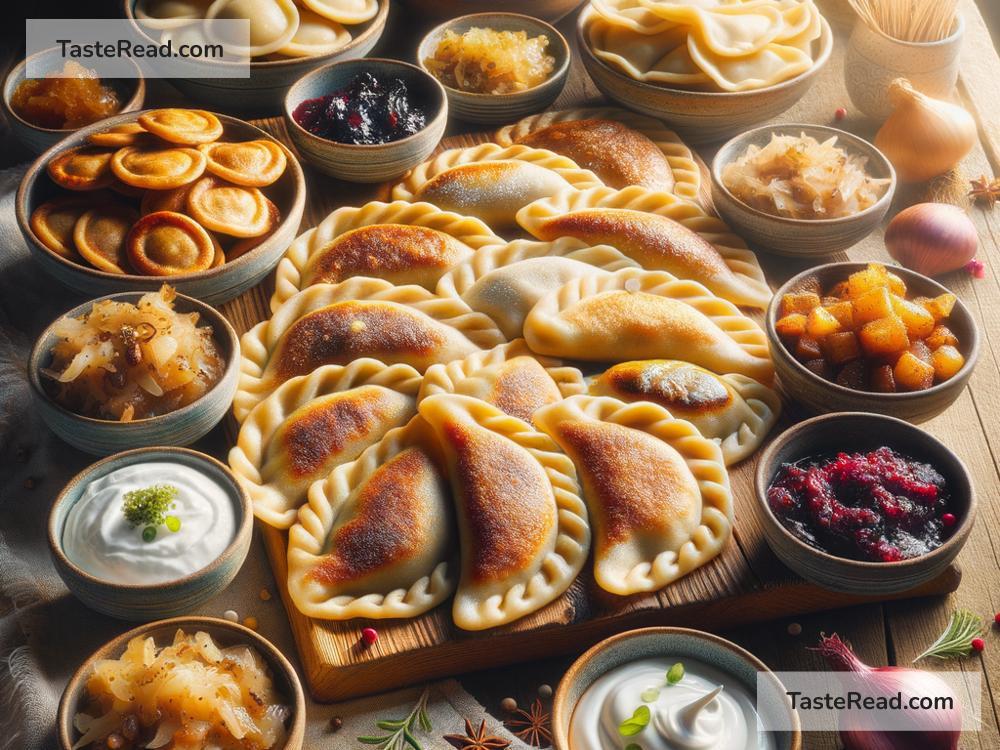Celebrating the Texture and Taste of Polish Pierogi Mastery
When we talk about food that brings warmth, comfort, and rich cultural history, Polish pierogi instantly come to mind. These small, stuffed dumplings are more than just a meal—they are a symbol of tradition, love, and creativity. Whether served at holiday dinners, family gatherings, or as a quick snack, pierogi occupy a special place in the hearts (and bellies) of many people around the world.
In this blog, let’s take a closer look at the texture, taste, and the art of making pierogi, while celebrating their rich Polish heritage.
What Are Pierogi?
Pierogi are dumplings made from a simple dough and filled with a variety of delicious ingredients. To make the dough, all you need are flour, water, salt, and sometimes sour cream or an egg. This dough is rolled out thinly, cut into circles, and stuffed with goodies ranging from savory to sweet. Once stuffed and sealed, pierogi are boiled and sometimes pan-fried for a golden, crispy finish.
Though the ingredients for pierogi seem simple, the possibilities for fillings are endless. Traditional Polish pierogi often include:
- Savory Fillings: Mashed potatoes and cheese (called pierogi ruskie), sauerkraut and mushrooms, ground meat, or seasonal herbs.
- Sweet Fillings: Fruits like cherries, blueberries, or plums, as well as sweetened cheese or jam.
No matter the filling, pierogi are little bundles of joy that showcase the careful craftsmanship of the cook.
A Taste That Feels Like Home
The magic of pierogi lies in their taste. Each bite combines the soft, chewy texture of the dough with the flavorful burst of the filling inside. Whether it’s the creamy potato and cheese combo of pierogi ruskie or the sweet tartness of fruit-filled pierogi, the contrast between textures and flavors is what makes them special.
For many people, eating pierogi is about more than taste—it’s about the memories connected to them. In Poland, pierogi are often served during Christmas celebrations, weddings, or other big family events. The recipe may even be passed down from generation to generation, making them a personal treasure tied to loved ones.
Pierogi as an Art Form: A Polish Tradition
Polish cooks treat pierogi-making as a craft and often pride themselves on their technique. The dough must be rolled out just right—not too thick, not too thin—and the edges must be sealed firmly so no filling escapes during cooking. Many pierogi makers add pleated edges around the dumpling, creating beautiful little works of art.
While some recipes are passed down through families, pierogi also come with regional variations. In some parts of Poland, you might find pierogi filled with buckwheat groats or spiced lamb. In others, the sweeter pierogi might be topped with a dollop of sour cream or a sprinkle of sugar.
The effort and care put into making pierogi reflect Poland’s deep-rooted tradition of hospitality and cooking with love. Sitting down to a plate of fresh pierogi feels like a culinary hug—it’s warm, filling, and deeply satisfying.
Versatility and Creativity in Modern Pierogi
While pierogi are known for their traditional fillings, modern chefs and home cooks around the world are experimenting with new ingredients and innovative takes on these classic dumplings. You can find pierogi stuffed with unusual fillings like spinach and feta, pulled pork, or even pumpkin puree for seasonal flair.
Restaurants specializing in pierogi are popping up worldwide, offering creative twists alongside classic recipes. You might even find vegan options or gluten-free variations, proving that pierogi not only celebrate tradition but also adapt to modern tastes.
How To Enjoy Pierogi Like a Pro
Want to fully appreciate pierogi? Here are a few tips:
1. Pair Them with Toppings: Savory pierogi taste amazing with fried onions, crispy bacon, sour cream, or parsley, while sweet pierogi shine with a drizzle of cream or powdered sugar.
-
Cook Them Right: After boiling your pierogi, pan-fry them for a light golden crust. This creates a wonderful contrast between the soft dumpling and crispy edges.
-
Take Your Time: Pierogi are best savored slowly. Let the flavor of the filling unfold as you enjoy each bite.
-
Share the Experience: Gather loved ones and make pierogi together. The process is fun, rewarding, and a great way to connect with family and friends.
Pierogi: More Than Just Food
At their core, pierogi represent connection—connection to family, to Polish culture, and to the joy of sharing a beloved recipe. Whether you’re enjoying pierogi for the first time or making them by hand, these dumplings carry a sense of warmth and tradition that stays with you.
So, the next time you bite into a pierogi, take a moment to appreciate its texture and taste. Celebrate the hands that folded it, the stories it carries, and the love cooked into every single dumpling. Polish pierogi mastery is something worth savoring, one delightful bite at a time.
Do you have a favorite pierogi filling or recipe? Feel free to share your thoughts and join the celebration of this beloved Polish treat! 🍽


